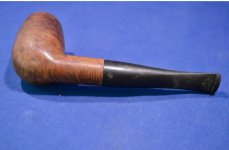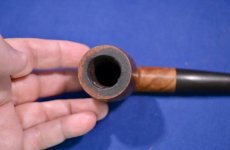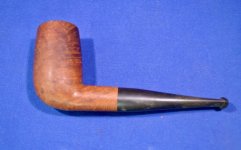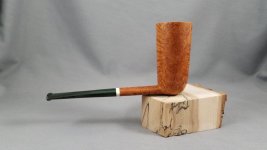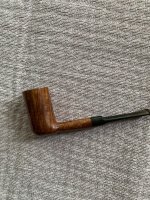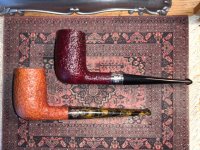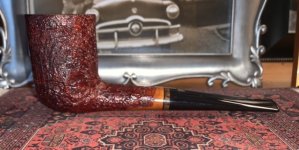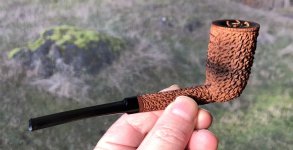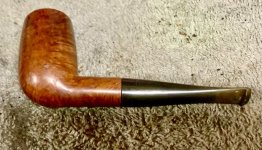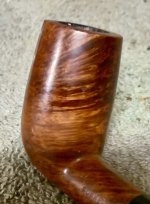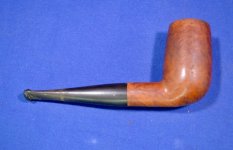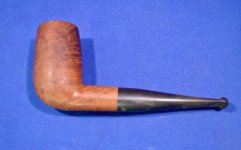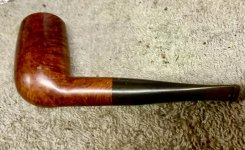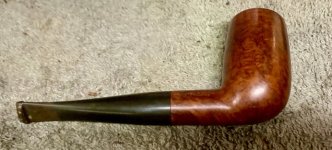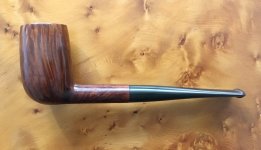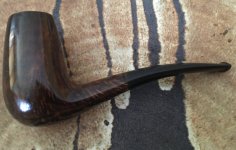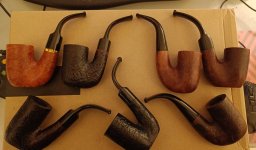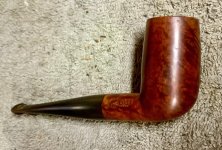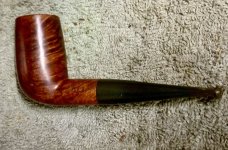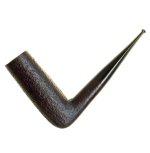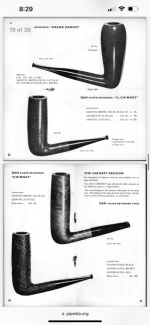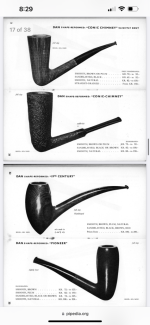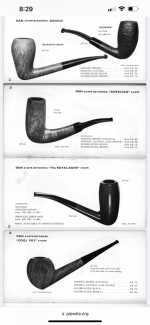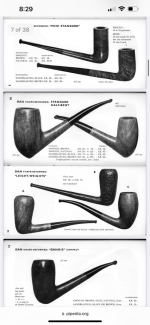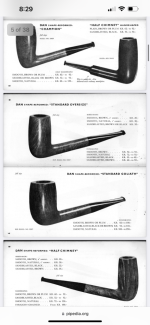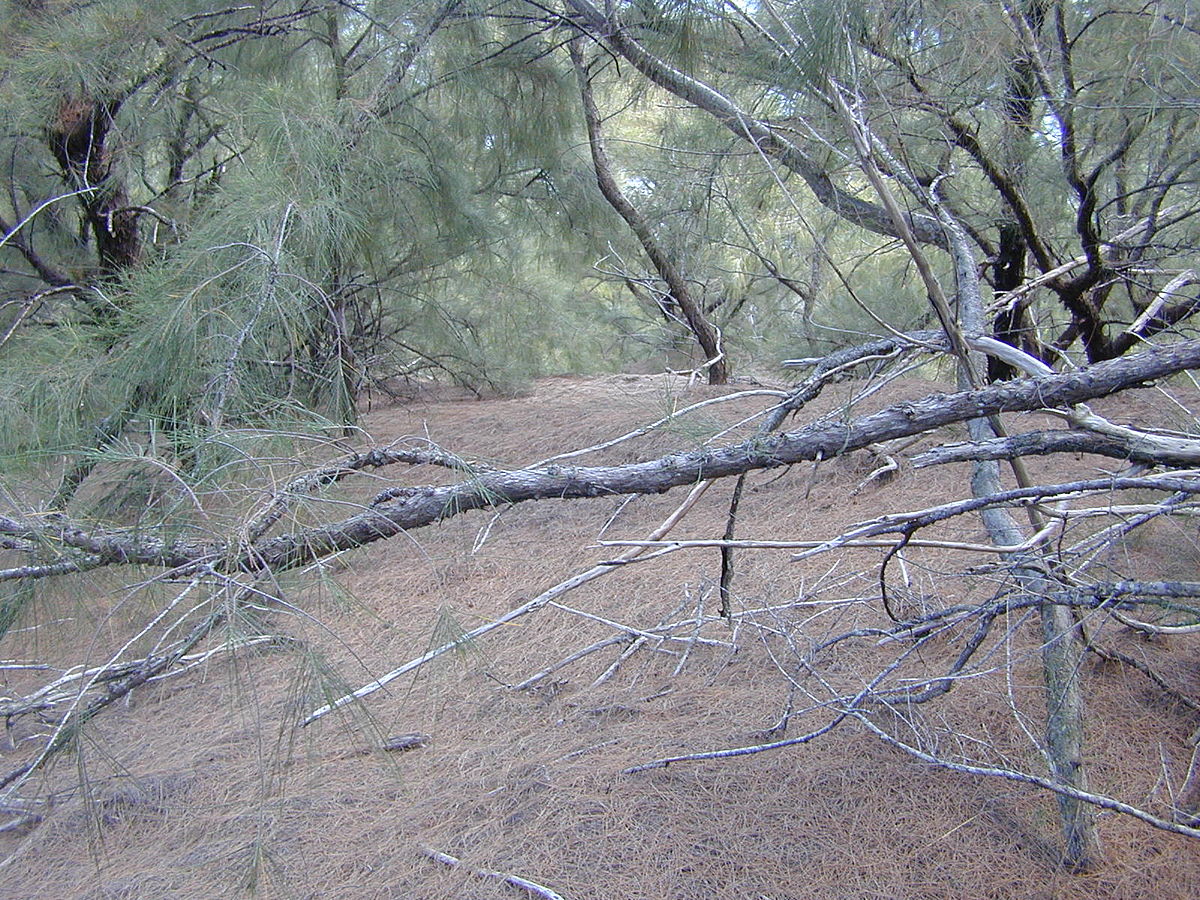The briar has nothing to do with it man! You are simply changing the finish, making the briar appear a different color.
So long as they made it I sprayed an aerosol wax on all my pipes for twenty years and for the last twenty I’ve used beeswax,,,.hundreds of times on hundreds of pipes.
Yes they’ll darken a little, but that lasts only as long as the wax. All briar does season, and darken with use.
But Algerian briar colored outrageously, and while the coloring is only a whisker deep, it just keeps on coloring.
And not all Algerian colors at the same rate, although sometimes like this Royal Ascot Supreme they just color to red immediately.
Four smokes
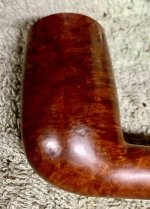
Wax doesn’t assume that red color on other briar.
And it’s hard for me to think the tars in the smoke are getting trapped by the wax.
If the pipe is varnished it hardly colors. If it’s heavily caked it seems to stop coloring.
I think there were some kind of tannins, sap, oils.,,,.something,,,,in the briar that hate heat. If the briar can breathe they push towards the surface and get trapped by the wax. Those same reddish oils or whatever they are must also impart a spicey taste to ancient Algerian briar.
Black walnut trees have a substance called jugalone that is alleged to help them compete against other plants and not be as tasty to herbivores. There are other plants that may have chemicals that prevent competition or depredation from insects.

en.m.wikipedia.org
Maybe when a heather shrub fights for a hundred years on a mountain in Algeria the survivors have some reddish oil that helped them survive in one of the harshest environments on earth.
But if they can breathe the things will color red, every one, every time, just at different rates. And the color is about like a black walnut stain, which does come from oils in the husk.
Why we don’t notice it, is that since 1954 new pipes made of the oldest, mountain grown, most expensive Algerian briar have nearly dropped to nothing.
You have to prowl eBay to buy them.


